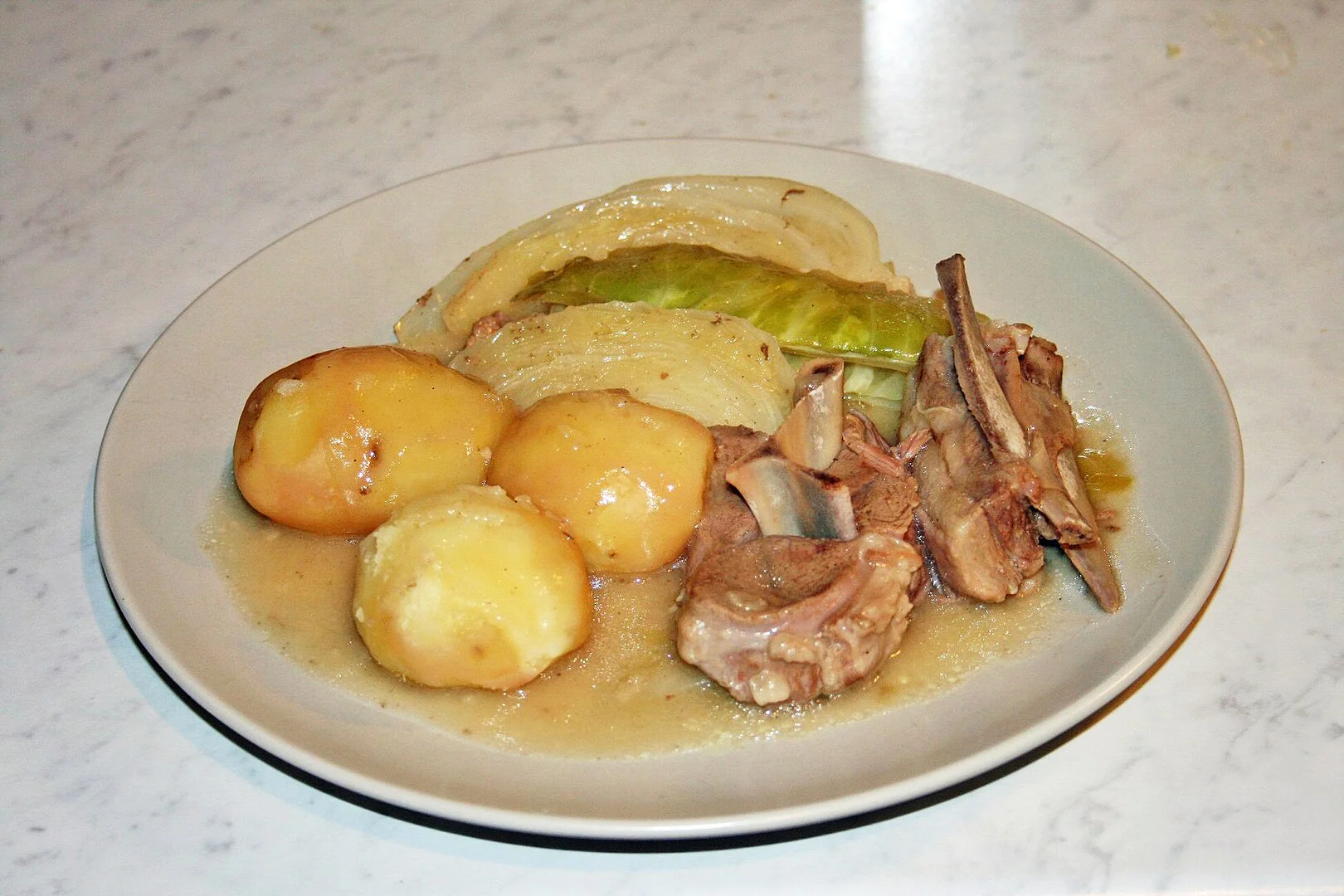There is nothing more exciting than discovering a new country through its cuisine. Norway offers not only stunning views of mountains and fjords, but also a bouquet of gastronomic experiences rooted in tradition. From unusual textures to familiar flavours, Norwegian cuisine presents a rich and varied table.
Norwegian Culinary Tour in OsloBy immersing yourself in the world of Norwegian specialities and home-cooked meals, you gain a deeper understanding of the country’s cultural heritage and everyday habits. In this article, we’ve selected nine local delicacies that you shouldn’t miss.
Lutefisk
Lutefisk is one of Norway’s most famous and controversial dishes. Dried cod is first soaked in an alkaline solution (most often caustic soda), which gives it a distinctive flavour and jelly-like texture. The fish is then thoroughly rinsed to remove excess alkali and left to absorb water. After this preparation, the tender fish can be fried or baked in the oven. It is traditionally served during the holidays, especially at Christmas, accompanied by potatoes, peas and cream sauce. Trying lutefisk requires a certain level of culinary courage!
Rakfisk
Rakfisk is fermented salted fish, usually trout or salmon. It is packed with salt and sugar and left in a container for several months, during which it develops its characteristic flavour and, ahem, ineffable aroma. Rakfisk is served with potatoes, onions, sour cream, and traditional Norwegian bread. This dish is considered a delicacy – although, like lutefisk, it may seem intimidating to the uninitiated. We recommend eating it with your nose pinched: rakfisk tastes far better than it smells :)
Walking for street food in OsloHerring & Salmon dishes
As you may have gathered from the dishes above, Norwegian cuisine takes great pride in its exceptional quality fish.
Herring is a highly valued product in Norway. It is prepared in every conceivable way: pickled, salted, smoked, even baked or fried – which might seem unusual to non-Norwegians. It’s typically served with vinegar, sugar and spices, or in mustard or sour cream sauce. Herring is considered a snack and is often enjoyed on bread, topped with slices of vegetables or boiled eggs.
Seafood tasting in TromsøLocal salmon stands out for its delicate flavour – it practically melts on the tongue. It can be cooked in any way imaginable, but to truly appreciate its quality, it’s best enjoyed fresh. One of the most popular options is Norwegian salmon sashimi, served with soy sauce, wasabi and pickled ginger.
Fårikål
If Norwegians favour meat over fish, this is often their go-to dish. Fårikål is made from lamb ribs, cabbage, peas, and a bit of flour – all stewed together in a pot for several hours. The result is melt-in-the-mouth lamb that easily falls off the bone. Mashed potatoes are the customary side.
Fårikål is traditionally prepared at the beginning of autumn, during the «season of young lambs». The dish is so beloved that it has its own holiday – the last Thursday in September!
Meat dumplings (Kjøttkaker)
These are small meatballs made from soft minced meat. The mixture typically combines beef and pork, seasoned with onion, spices and flour. The dumplings are fried until golden and served with thick meat gravy, carrots, and rutabaga. Hearty and comforting, this popular dish evokes the cosy feel of Norwegian home cooking and is loved by both locals and tourists.
Winter soup (Bergens fiskesuppe)
The biting snowstorms of Norway inspire the need for warming, satisfying dishes. Locals excel at preparing hearty soups, and this one – made from cod or salmon broth – is a favourite. Other types of seafood may be added for extra flavour.
Alongside the fish, the soup includes root vegetables (carrots, turnips, celery, leek and parsley), spices, cream and dry white wine. The addition of double cream makes it distinctively Norwegian. Sour cream and fried bacon can also be added for an even richer taste.
Try this fish soup with fresh bread on a cruise to Oslo.
Norwegian breads (Knekkebrød)
Norwegian breakfasts almost always include crispbread. It’s said the Vikings relied on them – these hearty snacks last a long time without losing their nutritional value. Historically a poor man’s food, crispbreads can be made from whatever is on hand in the pantry.
A mixture of oat flakes, bran, sesame, seeds, nuts, flax – modified to your taste – is combined with water and a spoonful of honey, then baked. The result is a kind of nutritious energy bar – tasty and sustaining.
Bløtkake
Bløtkake holds a special place among Norway’s sweet offerings. It is a soft, moist dessert made from light sponge cake soaked in apple juice. The cake typically has three layers, filled with whipped cream or custard, and topped with fresh berries and mint leaves.
There are countless variations: for instance, chocolate sponge or mascarpone instead of cream. Bløtkake is not a luxury dessert but a beloved homemade cake often made for the entire family.
Berries
Norway abounds with wild berries – blueberries, raspberries, lingonberries – all thriving in its clean, northern landscapes. You’ll find them at local markets, or if you’re feeling adventurous, growing wild in the forest. Locals add them to both sweet and savoury dishes. Not only do they add vibrant flavour, but they’re also packed with nutrients. And, of course, eating them straight from the bowl is its own kind of pleasure.
Hike through the landscapes of Westerålen with a picnic lunchThe people of Norway favour simple yet nourishing dishes based on fish and meat, reflecting the nature of their rugged, beautiful homeland. Don’t miss the chance to explore this dimension of Norwegian culture – and treat yourself to the tastes of the North.




 Sheng L / Unsplash
Sheng L / Unsplash  ebroslu / Pixabay
ebroslu / Pixabay  © Raimond Spekking / Wikimedia Commons / CC BY-SA 4.0
© Raimond Spekking / Wikimedia Commons / CC BY-SA 4.0  Joel Jasmin Forestbird / Unsplash
Joel Jasmin Forestbird / Unsplash 

 Udo / Pixabay
Udo / Pixabay Wolfmann / Wikimedia Commons / CC-BY-SA-3.0
Wolfmann / Wikimedia Commons / CC-BY-SA-3.0
Leave a Reply
Want to join the discussion?Feel free to contribute!